On Wednesday of this past week I bundled up and made my annual journey northeast to The New York Ceramics Fair, located on the Upper East Side of Manhattan. Each year at this time I look forward to attending the event and have been doing so since 2004. It’s always a pleasure to see the dealers and to drool over their fabulous merchandise, hoping that I will see some wonderful examples of inventive repair.
Leon-Paul van Geenen brought this amazing 17th century Dutch or German roemer with jaw dropping repairs.
Two brass palette-shaped plates, convex on the outside and concave on the inside, have been riveted together to conceal a large hole in the center.
The inside of the goblet shows the hammered ends of the rivets holding the plates in place.
The stem also has a unique repair; a plate with initials and a date of 1718, most likely the date of the repair and the initials of the restorer.
This is an example of a roemer without repairs, and in my mind, the less interesting of the two!
Another example of inventive repair brought by Mr. van Geenen is this small stoneware jug made in Sieburg, Germany.
The jug has three molded figural medallions, the center one with a man’s face and a date of 1595.
But what interests me the most is a lead plug with an incised cross, sealing a small hole on the side of the jug. I have not seen this type of simple yet effective repair before and will now be on the lookout to find other examples.
Tags: German, glass, staples/rivets, stoneware
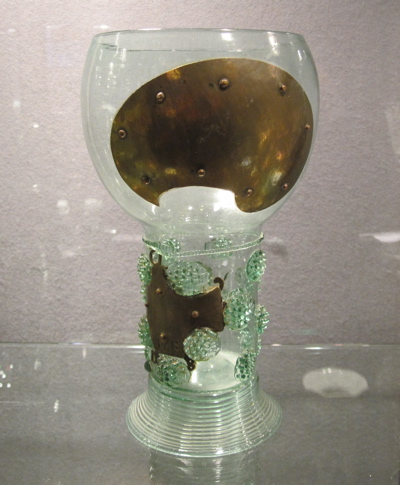
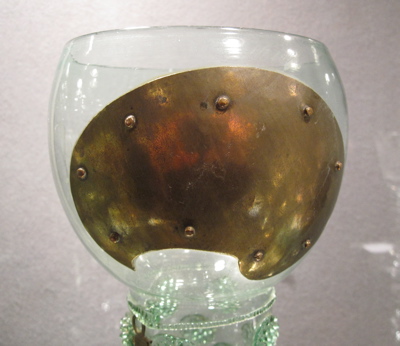
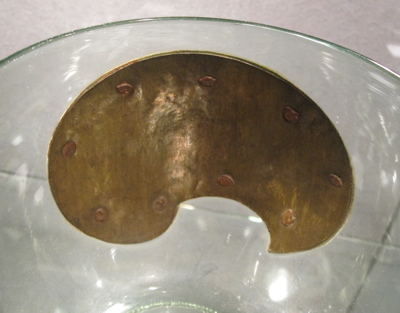
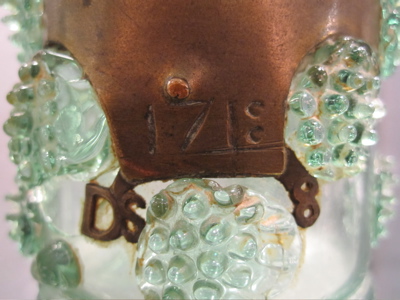
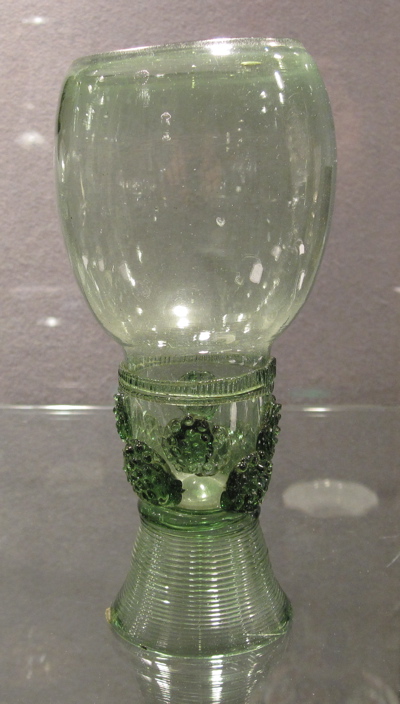
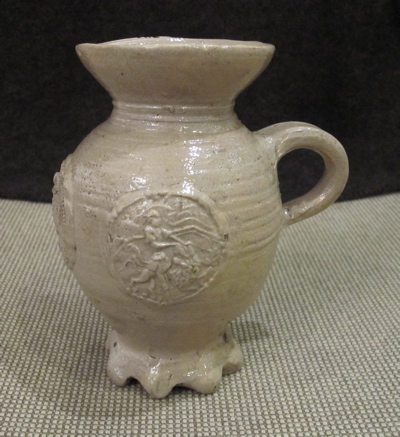
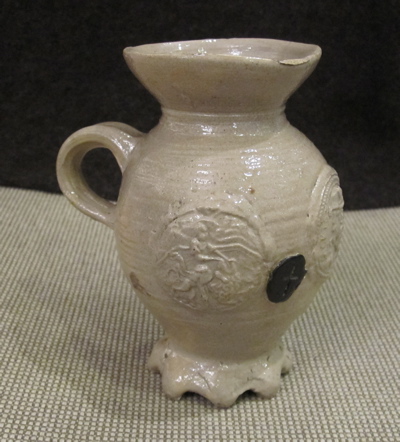
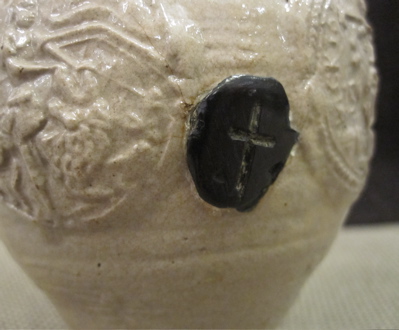
Very Interesting indeed…
Thank you Andrew,
I regret not being able to easily attend the NY Ceramic Fair. How wonderful to see the photos of two “make-do’s”.
I never have sent a mention of “thanks” for your blog. So, please know your enthusiams is shared. Kind regards, Marvin
What a fascinating repair by a talented individual. I definitely prefer the repaired example. This 300 year old item would adapt in a contemporary setting. The fusion of metal and glass bring it alive. I would love this piece in my collection.
Hi Andrew,
I am always enjoying receiving your interesting findings, amazing. I am very fascinated by all those objects. I thought you would probably be the best person to ask if there is any info online on the how to mend ceramics. i am a ceramicist myself and would love to experiment some of those techniques.
As a goldsmith, I can say it would be very tricky to make those rivets fast without cracking the glass more! Some very ginger work here…
Is it possible that the German jug was designed to have a hole like that. I can’t imagine how you’d make a tight hole in rugged pottery like this without smashing the pot unless it was formed before the glost firing.
Fascinating site you have here. Thanks.
Would love to see some posts about how the artisans performed the repairs they have made. Riveting through glassware with any sort of success rate sounds immensely skilled.